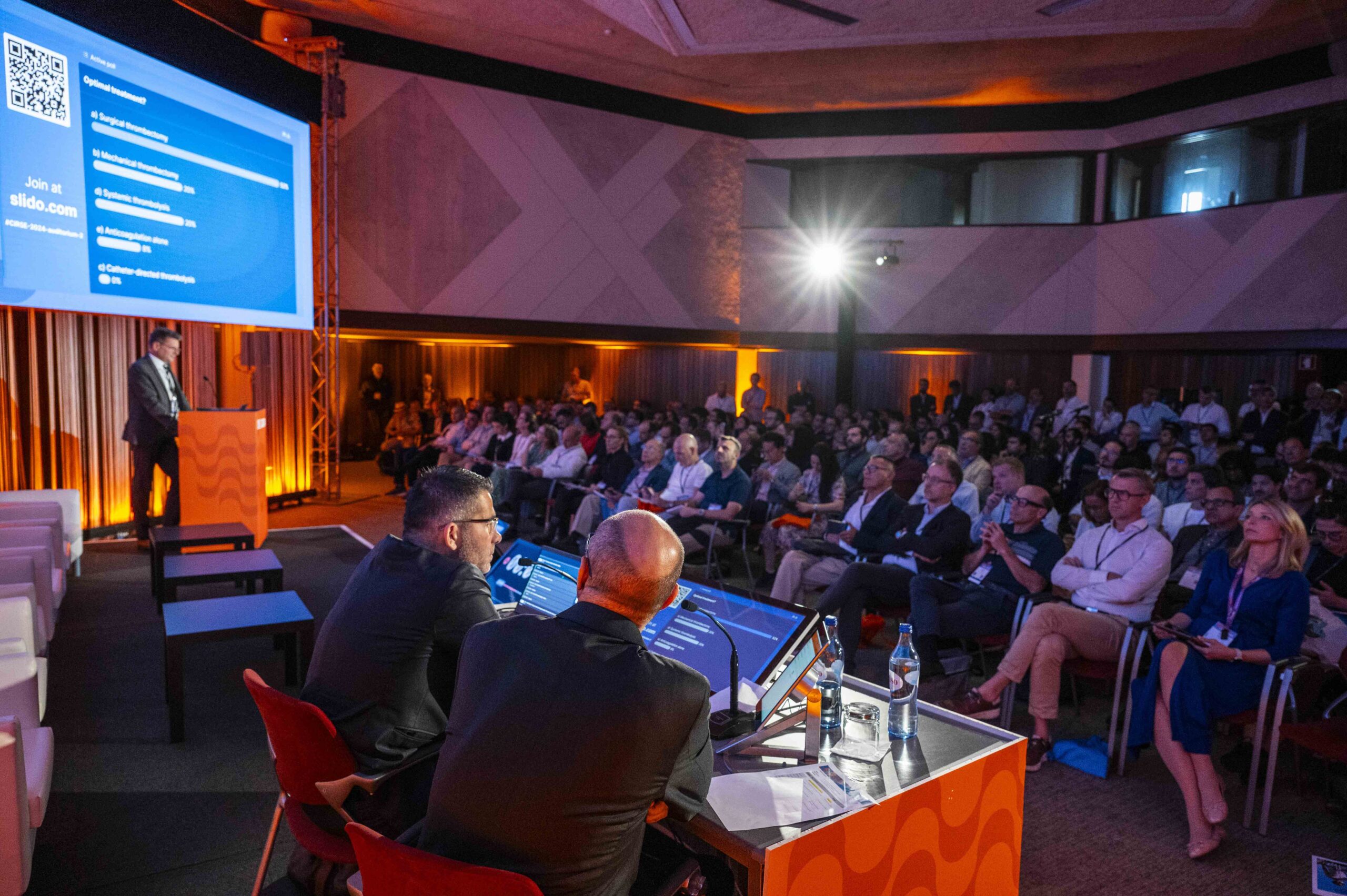Dr. Anna Maria Ierardi – Venous intervention
Recommended session: Making an impact on pulmonary embolism
Pulmonary embolism (PE) is one of the leading causes of deaths worldwide. The risk of death could be reduced through efficient patient pathways; catheter directed thrombolysis (CDT) is changing the approach to this life-threatening condition. This session pointed out the importance of being familiar with risk stratification to manage treatment. Interesting cases in which CDT made the difference were shown, and it was made clear that a prompt PE response team is crucial. That’s one of the aspects I am trying to push in my daily practise, along with my colleagues. This session also increased our interest in the expected results of the ongoing studies, because we need more strong evidence on CDT advantages before consolidating its worldwide application. I recommend this session to anyone who is approaching management of acute PE to have a complete overview of current state-of-the-art techniques and to be aware of what we are expecting from ongoing trials. My main takeaway from this session: I am sure that the new results will change literature evidence and consequently guidelines.
Prof. Andreas Mahnken – Clinical services
Recommended session: Setting up clinical services in IR – open for business
Interventional radiology evolved as a clinical specialty with interventional radiologists offering a unique blend of technical and clinical skills. While the development of our technical skills is quite advanced and well structured, there is a need to learn a lot about IR management, infrastructure, and the organizational aspects of patient management. This session combines all these important topics in a very comprehensive way. Starting with a practical overview and a best practice example, the session continues with practical information on the development of in- and outpatient infrastructure and concludes with strong plea for interdisciplinary collaboration. In-depth knowledge about these aspects of interventional radiology is as important as technical skills. Combined with a clinical mindset, they are key for the evolution of IR into a fully clinical specialty.
Dr. Fernando Gomez – Paediatric IR
Recommended session: Acute bleeding in children: what any IR should know to save a child
The session on “Acute bleeding in children: what any IR should know to save a child” highlighted crucial insights for managing life-threatening haemorrhage in children. The key takeaways included the importance of understanding the unique anatomical and physiological differences in paediatric patients, as well as mastering minimally invasive IR treatments that can effectively control bleeding in emergencies. Emphasis was also placed on rapid diagnosis using advanced imaging and the critical role of multidisciplinary collaboration in ensuring optimal outcomes.
This session can have a significant impact on practice by enhancing preparedness and offering a structured approach to handling paediatric haemorrhage. The knowledge gained can streamline decision-making during emergencies, improving both procedural outcomes and patient survival rates.
This session is highly recommended for interventional radiologists, but also paediatric surgeons, emergency paediatricians, and paediatric intensivists involved in acute care. Looking forward, advancements in paediatric-specific devices and imaging technologies will continue to refine treatment approaches, making this a dynamic and essential field for ongoing education.
Prof. Florian Wolf – Arterial interventions
Recommended session: Endovascular treatment of erectile dysfunction
For many years, I have worked on endovascular treatment of erectile dysfunction in close collaboration with my urological partner, who also strongly supports prostate artery embolization.
Until now, only the arterial problems with PTA/DEB PTA and DES implantation were part of my routine work. Following the talks of the four speakers in the session about endovascular treatment of erectile dysfunction, I’ve noted that the venous part of that problem is also very important and should not be forgotten, and I will work on that in the future.
Moreover, the speakers pointed out that erectile dysfunction as a first symptom of general cardiovascular disease is also a very important part of this topic that almost nobody talks about. There is very little awareness of this fact in the cardiological world. For that reason, IRs might play an important role in improving the understanding of erectile dysfunction, its treatment possibilities, and the impact on the general health of male patients.
Dr. Carla van Rijswijk – Aortic interventions
Recommended sessions: IDEAS 2024
My CIRSE 2024 highlight? The entire IDEAS programme! The 2024 Interdisciplinary Endovascular Aortic Symposium was a good reflection of multidisciplinary collaboration between IR, vascular surgery and other physicians working in aortic treatment. The case-based discussions (my worst endovascular cases and most amazing bail-out in endovascular procedures) and expert round table discussions were attended by many attendees from all over the world. In the course of the two days, the open and engaging discussions allowed interaction between various experts and showed advancements and controversies in aortic care with the emphasis on endovascular approaches.
I look forward to next year’s IDEAS with an inspiring faculty whose expertise and enthusiasm will make it another success and appealing to all physicians working in or interested in aortic treatment.




